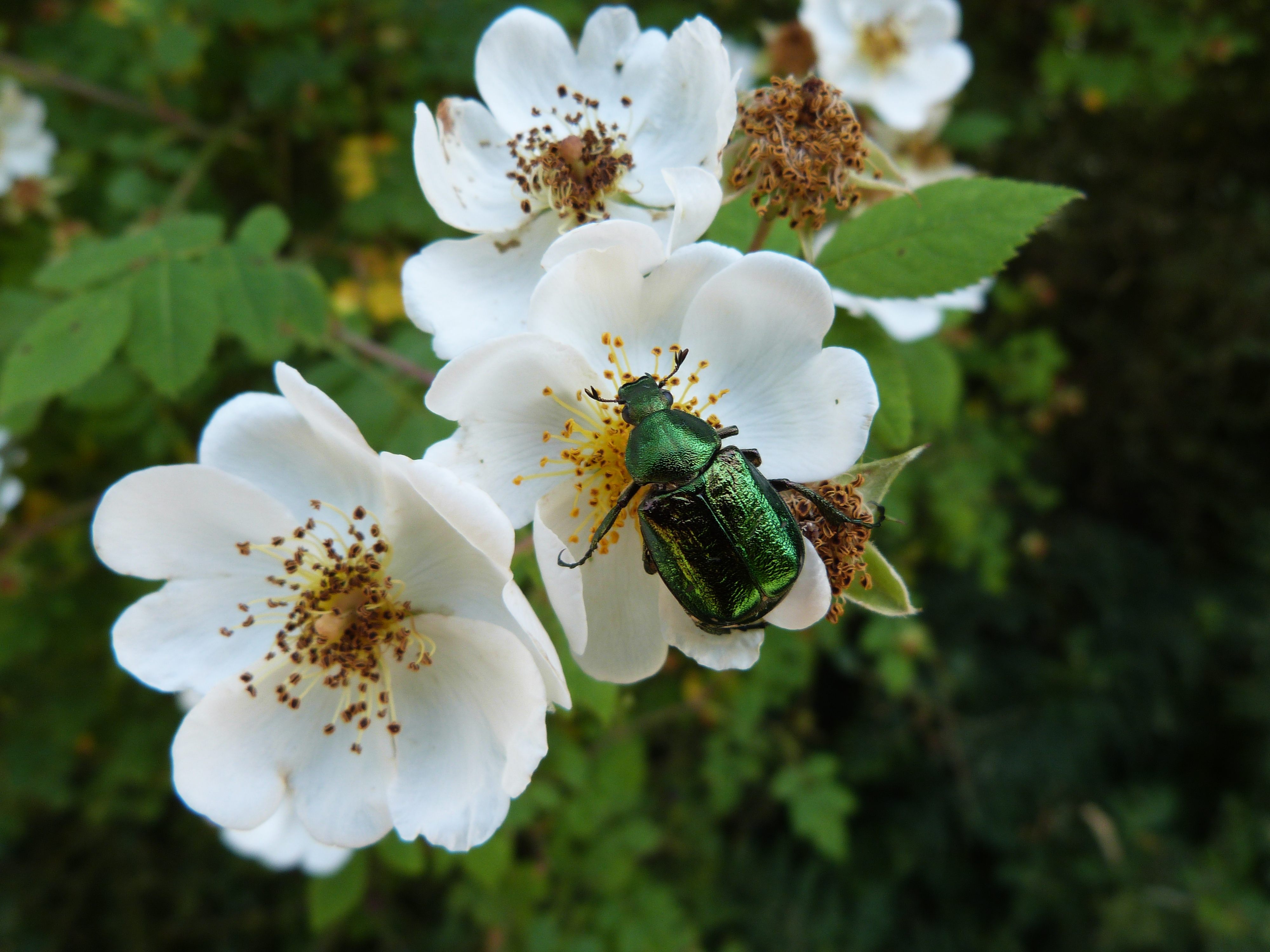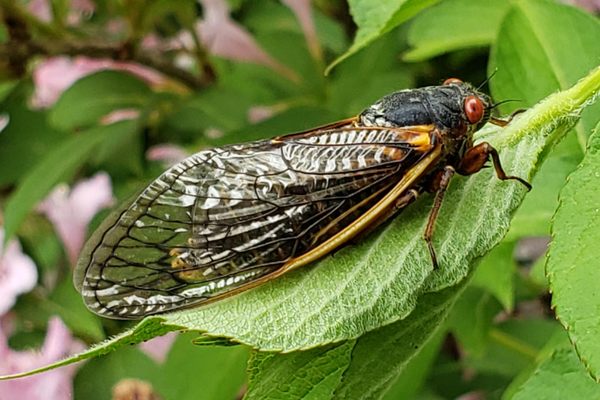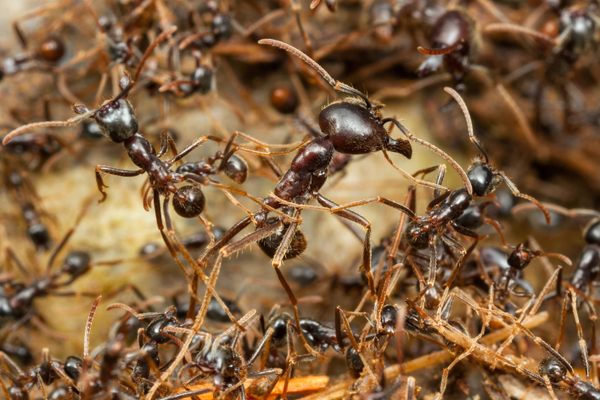If You’re in England, Keep Your Eyes Peeled for This Iridescent Beetle
Where, oh where, is the noble chafer?

In grassy, sun-dappled orchards across England, where there are storied fruit trees with ample blossoms and yielding bark, there are bound to be noble chafer beetles (Gnorimus nobilis). But how many, exactly?
The little insects shimmer emerald, copper, and violet in the sun and alight on decades-old cherry, plum, and apple trees flanked by fallen, rotting wood. They’ve been known to live near the orchards of Gloucestershire, Herefordshire, and Worcestershire, in clusters in the New Forest and South Oxfordshire, and at least a few orchards in Buckinghamshire. But those orchard landscapes have shrunk over the past decades—and there’s concern that Brexit could squeeze them even more. It’s also possible that these glinting little insects are happily at home in places where no one has noticed them: At just two centimeters long, even adult beetles are easy to miss.
In June 2019, to figure out exactly where the noble chafers are living, and in what numbers, the People’s Trust for Endangered Species will be collaborating with Deborah Harvey, a postdoctoral research fellow at London’s Royal Holloway University, to summon them—and they’re recruiting beetle enthusiasts to pitch in.


Researchers across the world have harnessed the enthusiasm of citizen scientists. Sometimes this is pretty passive—basically armchair ecology. Scientists have harvested geotags and other data from social media to gain insight into, for instance, the day that little flying ants take to the sky in buzzing clouds. The beetle survey will be an example of citizen scientists being more active out in the field.
Hints that you might have a noble chafer in your midst include frass, or tiny, pill-shaped pellets in the hollows of trees. For this upcoming survey, participants will be using specially engineered pheromones to lure the beetles into a little trap, mark them with a little spot, and report sightings. If you can hoof it to an English orchard in the coming weeks, maybe you can help.



















Follow us on Twitter to get the latest on the world's hidden wonders.
Like us on Facebook to get the latest on the world's hidden wonders.
Follow us on Twitter Like us on Facebook